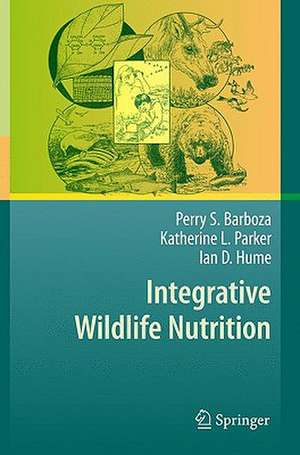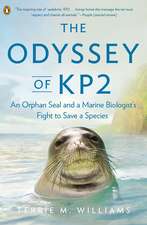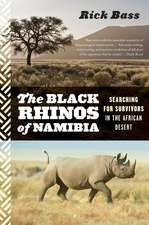Integrative Wildlife Nutrition
Autor Perry S. Barboza, Katherine L. Parker, Ian D. Humeen Limba Engleză Paperback – 3 noi 2009
| Toate formatele și edițiile | Preț | Express |
|---|---|---|
| Paperback (1) | 985.69 lei 6-8 săpt. | |
| Springer Berlin, Heidelberg – 3 noi 2009 | 985.69 lei 6-8 săpt. | |
| Hardback (1) | 935.24 lei 6-8 săpt. | |
| Springer Berlin, Heidelberg – 28 ian 2009 | 935.24 lei 6-8 săpt. |
Preț: 985.69 lei
Preț vechi: 1202.06 lei
-18% Nou
Puncte Express: 1479
Preț estimativ în valută:
188.74€ • 194.69$ • 156.43£
188.74€ • 194.69$ • 156.43£
Carte tipărită la comandă
Livrare economică 20 februarie-06 martie
Preluare comenzi: 021 569.72.76
Specificații
ISBN-13: 9783642036958
ISBN-10: 3642036953
Pagini: 360
Ilustrații: XVIII, 342 p.
Dimensiuni: 155 x 235 x 19 mm
Greutate: 0.52 kg
Ediția:1st ed. 2009. 2nd printing 2009
Editura: Springer Berlin, Heidelberg
Colecția Springer
Locul publicării:Berlin, Heidelberg, Germany
ISBN-10: 3642036953
Pagini: 360
Ilustrații: XVIII, 342 p.
Dimensiuni: 155 x 235 x 19 mm
Greutate: 0.52 kg
Ediția:1st ed. 2009. 2nd printing 2009
Editura: Springer Berlin, Heidelberg
Colecția Springer
Locul publicării:Berlin, Heidelberg, Germany
Public țintă
Professional/practitionerCuprins
Functional Relationships.- Introduction: Common Themes Across Diverse Taxa.- Food and Populations.- Feeding Dynamics: Functional and Behavioral Responses.- Measuring Food Consumption.- Digestive Function.- Substrates and Tissue Constituents.- Carbohydrates: Sugars, Fiber and Fermentation.- Lipids: Fatty Acids and Adipose Tissue.- Nitrogenous Substrates: Nucleic Acids to Amino Excretion.- Metabolic Constituents: Water, Minerals and Vitamins.- Energy and Integration.- Energy: Carbon as a Fuel and a Tissue Constituent.- Integrating Nutrient Supply and Demand in Variable Environments.
Recenzii
From the reviews:“The combined insights and disciplinary specialties of Barboza (Univ. of Alaska), Parker … and Hume (Univ. of Sydney, Australia) successfully meld to provide this unique resource for the wildlife scientist. … The use of simple, standard-format tables for calculation examples throughout the text provides the reader a welcome tool as well as familiar continuity. … References throughout are comprehensive, the writing style is seamless, and figures, photos, and tables are appropriate in number. Summing Up: Recommended. Upper-division undergraduate through professional collections.” (E. S. Dierenfeld, Choice, Vol. 47 (3), November, 2009)
Caracteristici
Elucidates the importance of wildlife nutrition from molecules and cells to ecosystems Key concepts are illustrated with flow diagrams of biochemical pathways and with practical examples for monitoring the nutritional status of wild animals Includes supplementary material: sn.pub/extras







